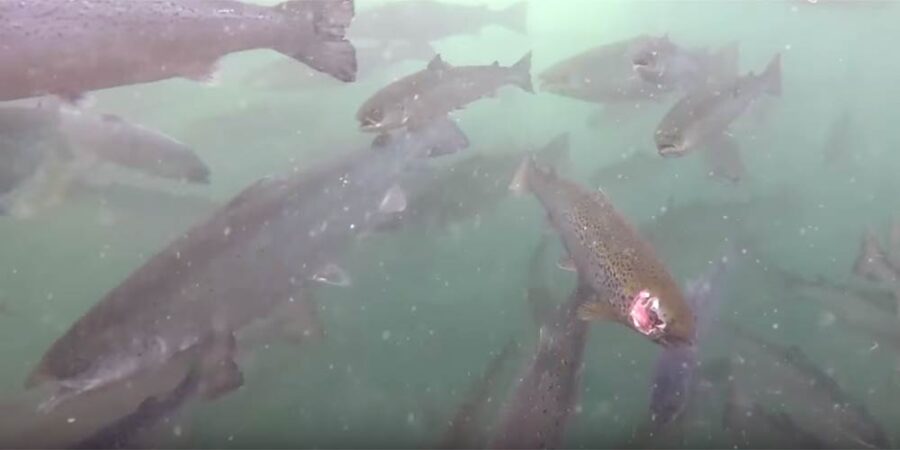Amoebic gill disease can be washed off fish in a process called ‘bathing’ which involves pumping fish through a tube into a freshwater tank, and then returning them to their sea pen. In summer months, fish may be forced to endure this ‘bathing’ process as often as every 30-40 days.
Processes like this are very stressful for fish and can result in injuries and mortalities, and in some instances mass deaths. In 2016, more than 175,000 salmon were killed ‘by accident‘ during treatment for sea lice in farms in Scotland. In 2018, a Tassal farm in Tasmania killed 30,000 fish during a ‘bathing’ treatment, citing ‘human error‘ as the cause.
8. Fish farms pollute the seas
Many off-shore aquaculture operations let faeces and food waste fall directly into the ocean below. The build-up of this waste can destroy marine ecosystems on the sea floor below, before eventually flowing into the ocean.
9. These ‘factory farms’ can infect wild fish populations
As many fish are farmed in sea cages in the open ocean, the prevalence of diseases in fish farms is a serious threat to ocean ecosystems as disease can spread into surrounding waters and infect wild fish populations.[4]
10. Mass deaths of sensitive individuals
On top of the risk of death from disease, salmon are sensitive to environmental changes such as temperature spikes and dips in oxygen levels. The build-up of waste on the sea floor under fish farms can negatively impact oxygen levels, as can the stocking density of fish, water flow, water temperature and a range of other factors. When oxygen levels drop, fish become stressed and struggle to breathe. In 2015, 85,000 salmon suffocated to death in a salmon farm in Tasmania due to a change in oxygen levels.
Atlantic salmon prefer cool waters and in the wild, they can migrate huge distances to find temperatures where they can thrive. In farms, their movement is restricted to pens, and when the temperature rises, they have no escape. In a New Zealand salmon farm, a large number of fish died when water temperatures rose to 18 degrees in 2015. The spokesperson for the farm refused to reveal the number of mortalities.
11. Fish suffer from depression
As many as 1 in 4 fish in fish farms show signs of severe depression and simply “give up on life”. These fish have stunted growth and can be seen floating lifelessly at the surface. The research concluded that depressed fish exhibit behaviours and brain chemistry almost identical to those of very stressed and depressed people.









